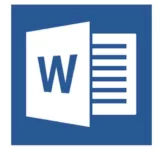Microsoft has un-bundled its Office suite of products for iOS users and is now providing a stripped-down version of Word that allows users to create and edit documents without an Office 365 subscription.
Some see the move as a desperation bid to stave off competition. Some see it as a way for Microsoft to increase their hold on corporate user’s minds (where 87 percent of their software licensing revenue come from). Others see it as a sign that Microsoft has no clue what they are doing.
My question is, how come nobody has been able to create a word processor that can compete with MS Word (or any of the other Office products)?
And anyone who thinks that Google Docs or Apple Pages are even remotely comparable products is living in a state of denial. Word is in a completely different category when it comes to features and functionality. It is a full-blown word processor while all the others (with the possible exception of WordPerfect) are little more than typing utilities with a few formatting bits thrown in.
And before all you fans of Google Docs or Apple Pages start crying that you can do just about everything you need to write a novel with these programs, I would point out that you could also write a novel on the wall of a cave with a bit of charcoal, but search and replace, spell checking and printing are going to present problems.
And I realize that most people never use most of the features in Word, but that doesn’t mean those features are frivolous or unnecessary. Some people rely on those features and actually use them all the time. I would rather have a feature and rarely use it than not have that feature when I need it.
I consider myself to be a Word power-user and make use of all sorts of features that other people might consider obscure or unnecessary and perhaps that has colored my vision when it comes to other word processors. I find it frustrating when I find out that I can’t do something with a different word processor that is trivial to do in Word. Charts and tables, searching and replacing non-printing characters, macros, support for hundreds of fonts, character/word/sentence/page count, grammar checking, customizable toolbars, bookmarks, revisions, styles, headers and footers, mail-merge, automatic table of contents and index generation, definable shortcut keys and on and on.
Do I use all these features on a daily basis? Some of them. Can any competing program offer even a fraction of these features? No. And that’s why even the Mac faithful would rather download a crippled version of Word for iOS than rely on Apple Pages, Google Docs or any of the dozen other free or inexpensive quasi-word processors that are out there.








